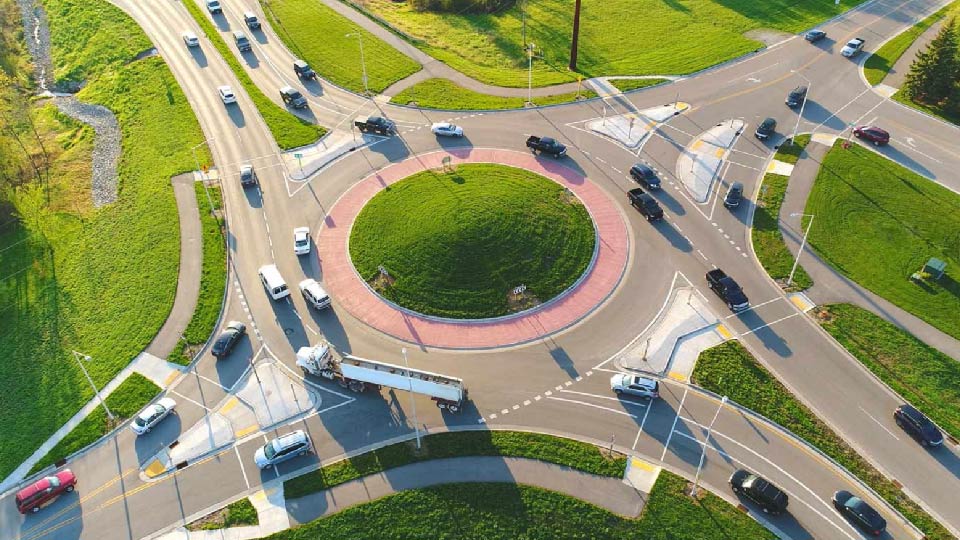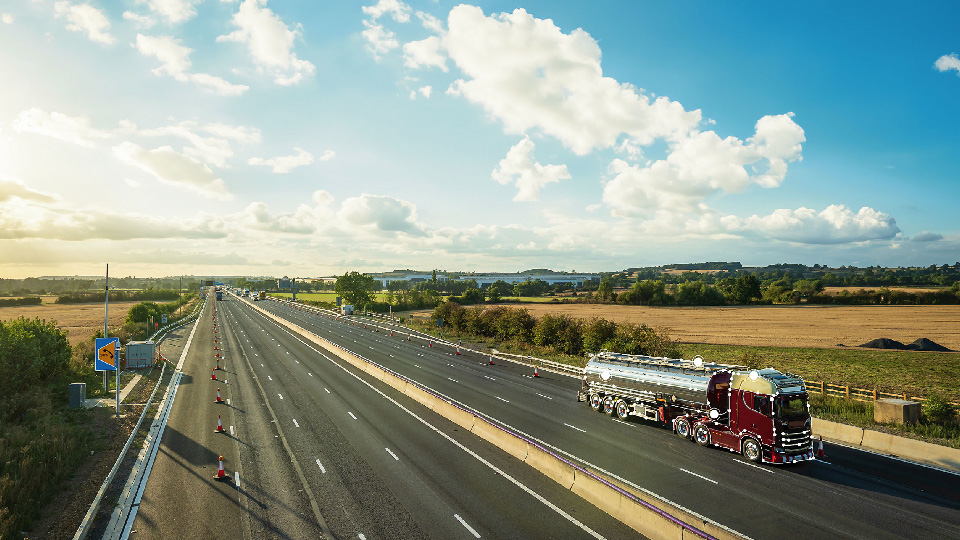
Best practices for fleet managers: Using rich data to obtain valuable insights

Table of contents
Chapter 1: Monitoring fuel usage
Petrol and diesel fuel prices have risen month over month in 2021 and that trend is set to continue. On average, a fill-up costs an extra 3p per litre across the UK when compared to their regional prices one year ago. This means a tank of diesel alone is roughly £5 more per fill-up.
The main cause of this is the cost of an oil barrel. This cost rose by £7.50 , and if analysts are correct, we could see an oil barrel cost as much as £18-23 more in 2021.This couldn’t have come at a worse time for fleet owners, given the impact the global pandemic has had on many UK businesses.
One thing you can’t do as a fleet operator is control the cost at the pump — or the cost of an oil barrel, for that matter — but by implementing a telematics solution effectively, you can expect to see savings of up to 14% on average for your fleet’s fuel costs.
Chapter 2: Reducing air pollution with AdBlue
This is another significant cost to any commercial fleet users operating diesel vehicles in the UK. In 2015, the EU introduced Euro 6, which is their strictest standard yet.
AdBlue and other diesel-specific items work to reduce the amount of CO₂ and NOₓ. AdBlue alone can reduce the amount of NOₓ by up to 90%. It is good to know this when diesel fumes alone are attributed to being responsible for multiple thousands of deaths in major UK cities each year.
What does this mean for a fleet operator?
On top of all the other running costs, they now have to consider the cost of AdBlue for their diesel fleets and will need to replenish it roughly every 5,000 miles driven. Failing to do so will result in two things:
- You won’t be compliant or meet strict Euro 6 regulations
- If you fail to top up your diesel vehicle, you could be left in a position where your vehicle won’t start
These are costly errors for any driver or fleet operator. At best, you will need to be able to fill up and restart at the side of the road. At worst, you may need to be recovered and taken to a garage to fix the error. Either way, it means unplanned downtime, which in itself will cost the business more money.
The good news is that a strong telematics solution will be able to help you monitor and track your AdBlue levels. How they do this will vary from putting in estimates based on miles driven or taking the AdBlue reading from the vehicle itself.
Chapter 3: Reducing idling
The cost of vehicle idling varies depending on the vehicle make and model. Over the years, there have been many statistics given about the cost to your business in terms of wasted fuel being burned. Stats range from a litre of fuel per hour idle to a gallon of fuel, which is approximately 4.5 litres.
If we assume that it’s somewhere in the middle, a fleet operator can expect to see added fuel costs of around £3 per hour, per vehicle. This is taking into consideration all of the different types of idling that can occur in a day, such as lunch breaks with the heat on, sitting in traffic, loading and unloading time and more. If a vehicle in your fleet is idle for just an hour per day, that could cost you an average of £720 per year (assuming a 5 day working week and 48 weeks of work in a year).
What idling is necessary for vehicle use?
- Completing your walkaround vehicle checks before you drive for the day
- Road traffic can cause idling
- To operate additional machinery on the vehicle, such as a crane, cement mixer hydraulics, etc.
What idling is unnecessary and can be reduced?
- Warming yourself up on cold days using the vehicle’s heaters
- Cooling down when hot using the vehicle's air conditioning
- Remaining stationary for more than 10 seconds (except in traffic)
- Defrosting your vehicle and warm the inside of a vehicle before driving
That said, a vehicle produces up to 20 times more pollution when idle than if it was travelling at 30mph, so reducing idling is still in your fleet’s best interest.
How can a fleet operator reduce idling in their fleet and keep the costs down?
You can start by introducing policies into your organisation that advise staff to turn off their vehicles when stationary. Alternatively, you can use technology to monitor driver habits and build reports on their progress. Either way, it’s not something to be ignored if you want to reduce running costs and operate a cleaner fleet.
Chapter 4: Maintaining compliance standards
For those with HGVs in their fleet, it goes a little deeper than making sure your drivers have safe vehicles on the road. To take a closer look into some of the key requirements, a fleet operator first has to monitor the following data to remain DVSA compliant:
Tachograph
Vehicles over 3.5 tons registered on or after May 1, 2006 are required to have a digital tachograph installed to record the drivers’ working time and rest periods alongside the vehicles’ speed and distance travelled.
Once the data is recorded, the challenge facing operators is analysing this data to identify potential breaches of the rules, known as infringements. An operator is expected to produce clear infringement reports as without these, it’s very difficult to highlight or scrutinise a driver for potential infringements.
Driver hours
Operators have legal obligations to have their drivers observe and abide by the laws on driver hours. Failure to comply leaves them at risk if infringements are identified by an enforcement officer, with the potential outcome being criminal prosecution.
While infringements don’t automatically result in action against the operator, failing to have a system in place that regularly captures and analyses tachograph records can dramatically increase the likelihood of falling short of an operator’s obligations.
Data analysis
Whether analysing tachograph data in-house or through an external tachograph analysis provider, operators can leverage Geotab’s tachograph solution to remotely download their tachograph data using an automated over-the-air process.
This helps to routinely capture data and is easily accessible to perform the analysis. Furthermore, with automatic remote downloading, all information is updated in real-time, eliminating manual management of driver and vehicle information.
Walkaround checks
It is the driver’s responsibility to complete their walk-around checks before they drive the vehicle that day. If they find any defects, or deem the vehicle unsafe to drive, they have to report them in writing to the person sorting out the defects in their organisation.
For details on what your driver needs to do to remain compliant, visit this HGV daily walkaround checks page from the UK government. You can also watch this short video as well.
Direct Vision Standard (DVS)
This is a new standard that currently only affects vehicles that weigh 12 tons or more and drive in the Greater London area. This also requires a permit application, which is free of charge, but getting your fleet to the five star rating is another expense altogether. Fleet operators are required to complete the self assessment to gain the entry level permit.
For more information on DVS and what you need to do to get your permit and rating, visit the Transport for London Star ratings and Safe System improvements page.
Chapter 5: Transitioning to electric
With the UK government banning the sale of new petrol and diesel vehicles by 2030, continuing to ignore electric vehicles (EVs) could prove a costly or fatal mistake for your business.
For example, as early as June 2021, the city of Birmingham will be launching their Clean Air Zone (CAZ) program. This program is planning to charge cars, taxis and vans £8 per day to enter their CAZ. HGVs, coaches and buses are expected to pay as much as £50 per day. Imagine this is similar for the other cities across the UK, how much will it hit the bottom line of the HGV operators to drive HGVs into multiple CAZ? Just another added cost which will have to be passed on to their customers in some capacity.
Why are EV programs important to know for a fleet operator?
Over the next few years, at least 25 cities will be following in Birmingham’s footsteps by implementing their own programs. Depending on the class of the CAZ, your commercial petrol and diesel vehicles could face charges to enter these zones on a daily basis.
If your fleet crosses through multiple cities where these CAZ programs are in place, it could mean significant costs to your fleet for simple daily operations. By getting on board with fleet electrification, you could be saving your business money in the long run.
To put things in further perspective, in 2019, OEMs launched 143 new electric vehicles, including 105 battery electric vehicles (BEVs) and 38 plug-in hybrid electric vehicles (PHEVs). By 2022, they plan to introduce around 450 additional models, mostly in the mid- to large-size vehicle ranges. This shows an increased awareness of the benefits that electric vehicles possess and paints a clear picture for the future of transportation.
To learn more about the benefits of going electric, you can find further reading in our white paper, Going electric: How UK fleets can successfully switch to EV.
Chapter 6: Operating electric
When you already have EVs in your fleet, it’s important to keep on top of the various metrics associated with them to keep your fleet costs low. Just because you don’t have to pay for emissions or fuel, doesn’t mean they operate completely without cost.
What do you need to know about EV performance?
You need to be able to readily answer the following questions:
- How are my EVs performing?
- Are my drivers plugging in?
- Who needs to charge?
- Where are my vehicles charging?
- How much does it cost me?
- How can I make sure the EVs are fully charged and ready to drive in the morning?
- What are the ranges I can expect under different conditions?
- Who drives efficiently? Who doesn’t?
Part of answering these questions is using a telematics provider to pull actionable data from your EVs to turn it into fleet insights. A Simple ‘track and trace’ telematics solution won’t give you all that rich EV data.
Read more about EVs and telematics in our blog: Develop the business case to electrify your fleet.
Chapter 7: Evaluating total cost of ownership
Total cost of ownership (TCO) is another key factor in relation to fleet management. TCO expenses are often one of the highest costs associated with fleet management. It is important for this to be measured and managed so fleet managers can identify problems and make educated decisions in relation to their fleet vehicle costs.
Many fleet managers may assume that the upfront costs of an EV are not worth it compared to the lower costs of petrol or diesel trucks. However, according to a recent report completed by IDTechEx, it has been discovered that even without subsidies from the government, electric vehicles could reach parity in terms of total cost of ownership in roughly four and a half years.
The report also states that EVs, from small passenger vehicles to large multi-ton lorries, will be more cost effective than diesel or petrol vehicles by the end of the decade. This information is useful to know as it can help you make the decision to invest in electric vehicles now to save money later and keep upgrading your fleet to electric as cost parity grows closer.
For more information on TCO and how to figure out where your fleet stands, we suggest you read our blog, How do you calculate total cost of ownership?
Conclusion
There are many metrics a fleet manager can track to improve fleet performance. The best practices outlined in this ebook help to showcase the costs and benefits associated with fleet management and various UK compliance regulations.
To learn more about how Geotab’s fleet management solutions can help you, please visit our website www.geotab.com/uk/
About Geotab
Geotab is a global leader in connected vehicle and asset solutions, empowering fleet efficiency and management. We leverage advanced data analytics and AI to transform fleet performance, safety, and sustainability, reducing cost and driving efficiency. Backed by top data scientists and engineers, we serve over 55,000 global customers, processing 80 billion data points daily from more than 4.7 million vehicle subscriptions. Geotab is trusted by Fortune 500 organisations, mid-sized fleets, and the largest public sector fleets in the world, including the US Federal Government. Committed to data security and privacy, we hold FIPS 140-3 and FedRAMP authorisations. Our open platform, ecosystem of outstanding partners, and Marketplace deliver hundreds of fleet-ready third-party solutions. This year, we're celebrating 25 years of innovation. Learn more at www.geotab.com/uk, and follow us on LinkedIn or visit our blog.
© 2025 Geotab Inc.All Rights Reserved.
This white paper is intended to provide information and encourage discussion on topics of interest to the telematics community. Geotab is not providing technical, professional or legal advice through this white paper. While every effort has been made to ensure that the information in this white paper is timely and accurate, errors and omissions may occur, and the information presented here may become out-of-date with the passage of time.
Recent News

The Unseen Toll: Driver Stress and Road Safety
May 13, 2025


In the Driver’s Seat: Accelerating ROI Through Trusted Data Insights
July 12, 2024

